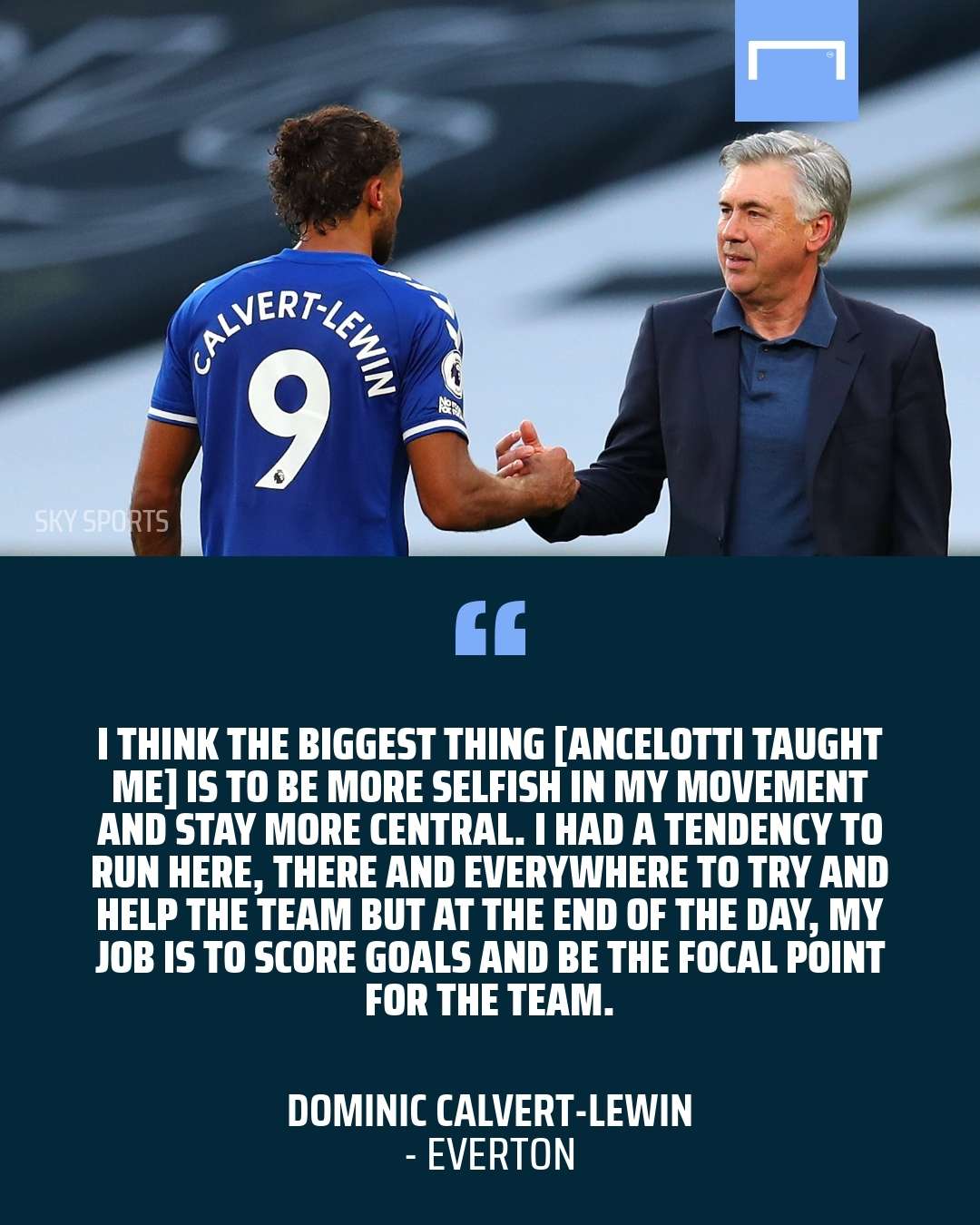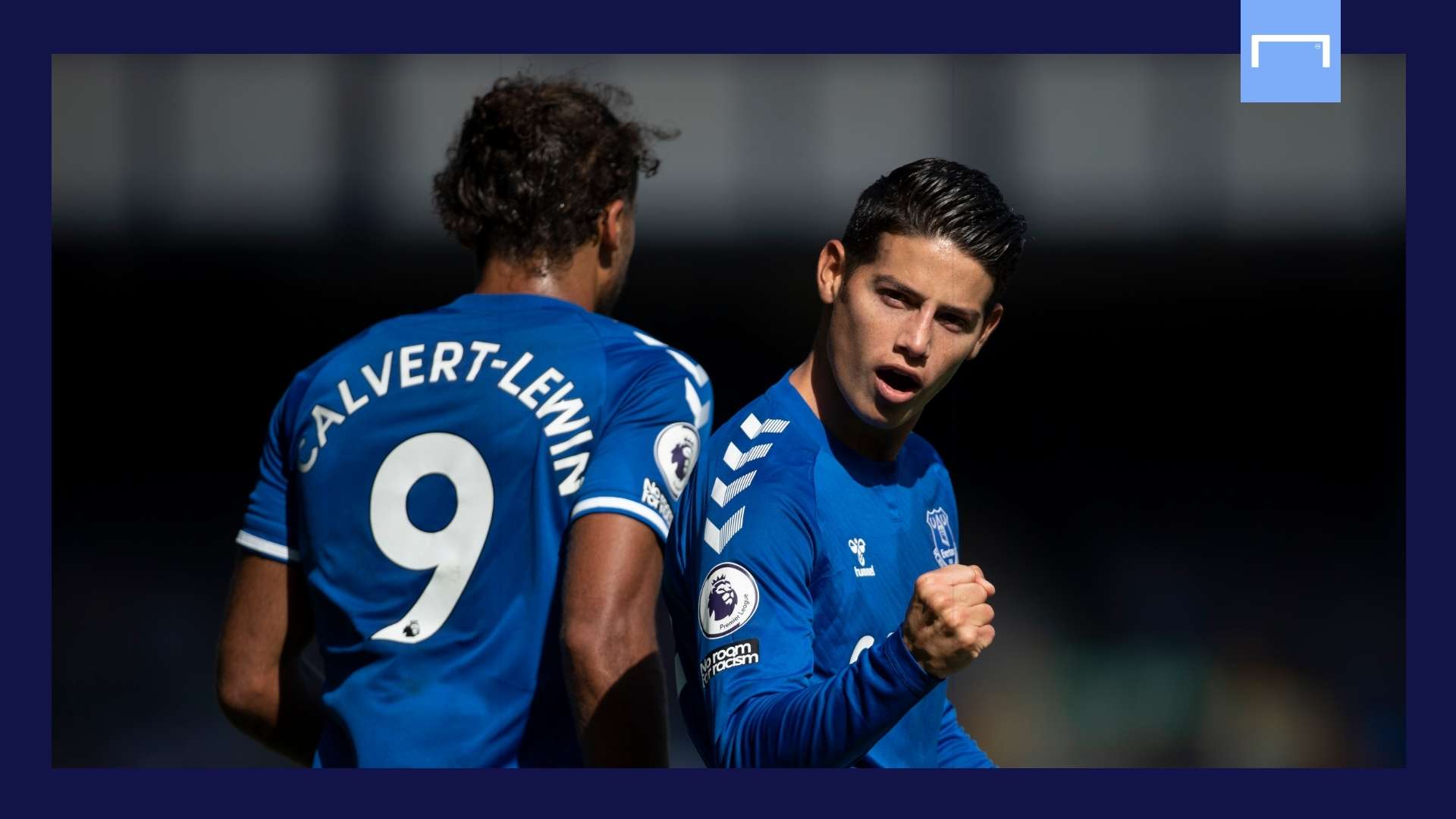Dominic Calvert-Lewin stole the headlines away from home debutants Allan and James Rodriguez last weekend with his first Premier League hat-trick.
Judging by the hype surrounding the Everton striker this week, it looks set to be a seminal moment for the young striker.
Within 72 hours of his treble against West Bromwich Albion, it emerged that Manchester United had considered making a move for Calvert-Lewin, only to be put off by the reported £80 million ($102m) asking price.
That might seem like an inflated price for a forward with just 28 goals in 117 Premier League appearances but it will not be long before Calvert-Lewin is commanding that sort of fee.
Thanks to the work of Carlo Ancelotti and Duncan Ferguson, he is on the path to become one of the division’s best strikers, and an England regular.
Most people had until recently dismissed Calvert-Lewin as a decent but unspectacular forward, deeming him too slight to become an out-and-out No.9 and too inconsistent to advance beyond the classic role of a Premier League academy graduate: a hard-working forward regularly shunted out wide to run the channels and score the occasional goal.
However, Calvert-Lewin has taken huge strides under the tutelage of Ferguson and Ancelotti, both of whom have worked to convert him into a sharp penalty-box poacher.
Ferguson began the process as caretaker manager, using an arm-around-the-shoulder approach, as well as coaching Calvert-Lewin on how best to head the ball and arrive at the back post like the Everton legend used to do.
By scoring twice in Ferguson’s first game in charge, a 3-1 win over Chelsea, Calvert-Lewin took a huge symbolic step forward. No longer was he pushed out to the wings. He was Ferguson’s no.9, ready to get on the end of the long balls forward and those perpetual, old-school crosses into the box.
Ancelotti took the coaching further.
“I think the biggest thing [Ancelotti taught me] is to be more selfish in my movement and stay more central,” Calvert-Lewin told Sky Sports in June. “I had a tendency to run here, there and everywhere to try and help the team but at the end of the day, my job is to score goals and be the focal point for the team.”
That certainly conforms to the sight test during the forward’s early years at the club, suggesting a mixture of Marco Silva’s tactical approach and a natural lack of confidence as a youngster led him to a less assertive role in the team.
After his hat-trick last weekend, Calvert-Lewin again praised Ancelotti’s impact, telling reporters that the Italian is "on me every day for first-touch finishes and to be in the box, in the right areas."
That conversion into an ‘instinctive’ finisher is the biggest factor in the player’s transformation in 2020, and why Ancelotti has compared him to Filippo Inzaghi.
"I had a fantastic striker in Inzaghi, who scored 300 goals and 210 with one touch," Ancelotti said on Saturday. "A striker has to be focused in the box and I think Calvert-Lewin understands really well because in the box he has speed, he jumps really high, he has power.”
That speed, jump reach, and power are of particular significance with regards to Ancelotti’s tactical preferences.
The Everton manager almost exclusively plays a 4-4-2 formation, in which the shape itself is relatively fluid as a central midfielder drops to make a back three, the full-backs push very high, and one of the wingers dips infield to help cover the spaces.
 Getty/Goal
Getty/Goal
This positional fluidity helps Everton progress quickly through the pitch with vertical passing, avoiding stale possession – and ensuring the full-backs are on the ball, in space, in the final third. From here, the goal is to cross, cross, and cross some more.
We might only be two games into the season but Ancelotti’s side rank fifth for crosses attempted, fourth for completed crosses, and first for set-piece goals. Seamus Coleman and Lucas Digne are the most important players in this regard, although James Rodriguez and Allan have quickly taken to clipping balls towards Calvert-Lewin and Richarlison.
With two strikers rather than one, Everton often have an advantage in the penalty area at the back post, which is generally where Calvert-Lewin pops up while his striker partner distracts the central defenders.
It is a simple and traditional tactic, but one working superbly now there is more creative impetus in the starting 11.
Calvert-Lewin is only going to get better throughout the 2020-21 season, too, primarily because his newfound tendency to stay central and pop up in a poacher’s position is ideal for a playmaker like James Rodriguez.
The Colombian, wrongly labelled as a flop at Real Madrid and Bayern Munich, has amassed 87 goals or assists in 129 league games since first arriving in Madrid in 2014.
His superb performances so far in an Everton shirt should not surprise anyone, and James will continue to dictate the tempo, drifting in off the flank into the No.10 position to create goalscoring opportunities for Calvert-Lewin.
 Getty/Goal
Getty/Goal
Since breaking into the Everton team, the 23-year-old has never been given consistent service before. The closest the club have come to a true provider is Gylfi Sigurdsson, a No.10 whose output is greatly exaggerated by his set-piece speciality.
In James, Calvert-Lewin finally has someone to deliver high percentage chances.
Long before Ferguson took temporary charge or Ancelotti was handed the reins in December, Calvert-Lewin had shown some of the raw attributes needed to be a top-level striker.
His aerial prowess, now a well-known feature of his game, was always unusually good, but even more impressive was his tactical intelligence.
With a neat first touch, clever runs into the channels, and surprisingly good hold-up play for a forward who doesn’t necessarily look particularly strong, Calvert-Lewin was tidy – and perhaps a little too tidy.
What Ancelotti has done throughout 2020 is sharpen his edges, refining his game into that of a more stream-lined – and more ruthless – No.9.
It is no wonder Manchester United are interested. Calvert-Lewin looks set for the top of the game.
